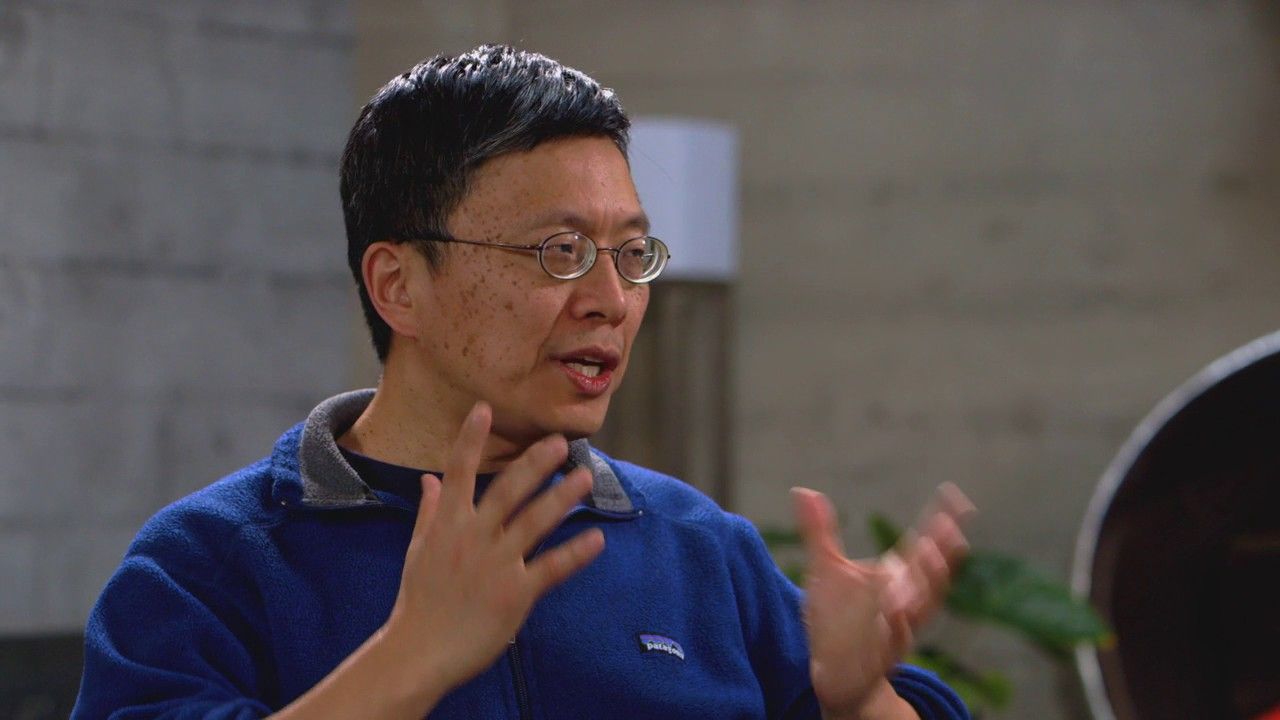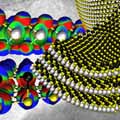Nov 17, 2016
Watch your day in 2020 [ Future Technology ] [HD] 2016 VIDEOs 1080p — Discovery & Documentary
Posted by Shane Hinshaw in categories: education, futurism
We share information only for educational purposes.
Subscribe & Join us :

We share information only for educational purposes.
Subscribe & Join us :
Controlling artificial intelligence devices by voice will come soon said AI expert Neil Jacobstein.
Artificial intelligence is set to transform the world, the audience at a Christchurch conference on the future was told.
Artificial intelligence (AI) “allows us to expand the range of the possible, to do things we never thought we could do before,” said Neil Jacobstein who chairs the artificial intelligence and robotics track at Singularity University, a think tank based in California.
Continue reading “SingularityU: Artificial intelligence to transform every aspect of life” »
Luv it! Wait until we make the marriage of QC meets Synbio — QC for the infrastructure and communications, and Synbio makes us all connected.
Cambridge, MA (Scicasts) — Synthetic biology allows scientists to design genetic circuits that can be placed in cells, giving them new functions such as producing drugs or other useful molecules. However, as these circuits become more complex, the genetic components can interfere with each other, making it difficult to achieve more complicated functions.
MIT researchers have now demonstrated that these circuits can be isolated within individual synthetic “cells,” preventing them from disrupting each other. The researchers can also control communication between these cells, allowing for circuits or their products to be combined at specific times.
Continue reading “Synthetic Cells to Isolate Genetic Circuits Created” »
DALLAS — AT&T is experimenting with artificial intelligence (AI) and combining it with software-defined networking (SDN) and network functions virtualization (NFV) to figure out a better way to run its network.
Speaking on a panel at the 5G North America conference, Brian Daly, director of core network and government regulatory for AT&T, said that the company is looking at AI as a way to operate its network more efficiently by using it to make decisions that currently might require human interaction today. “We see AI combined with SDN and NFV as a way to provide us with efficiencies that may not exist today,” Daly said.

https://youtube.com/watch?v=J7_RDJtkBZ0
Microsoft has announced a new partnership with Elon Musk’s OpenAI nonprofit to advance and democratize artificial intelligence. Between OpenAI and Microsoft AI and Research, open-source AI breakthroughs should not take too long to surface. Pictured here are Harry Shum, Microsoft AI and Research Group executive vice president, and Sam Altman, co-chair of OpenAI. ( Microsoft Blog )
Microsoft is partnering its artificial intelligence research arm with Elon Musk’s nonprofit OpenAI, announcing the “industry’s first cloud bot-as-a-service” on Microsoft Azure.
Scientists have discovered an antibody produced by an HIV-positive patient that neutralises 98 percent of all HIV strains tested — including most of the strains that are resistant to other antibodies of the same class.
Due to HIV’s ability to rapidly respond to the body’s immune defences, an antibody that can block a wide range of strains has been very hard to come by. But now that we’ve found one, it could form the basis of a new vaccine against the virus.
Researchers from the US National Institutes of Health (NIH) found that the antibody, called NG, was able to maintain its ability to recognise the HIV virus, even as the virus morphed and broke away from it.
Continue reading “Scientists Have Identified an Antibody That Neutralises 98% of HIV Strains” »
Lenses with a surface accuracy in the nanometer range are behind ever more accurate laser and optical systems. Manufacturers depend on ultra-precise optical and mechanical ablation processes, innovative coating processes and extremely accurate measuring technology to venture into these nano-worlds. The latest trends in optical manufacturing will be showcased by the world’s leading trade fair LASER World of PHOTONICS, from June 26–29, 2017 in Munich.
 Nanoscribe GmbH’s 3D printing process creates three-dimensional micro and nano lenses from photosensitive coatings. The structures are built up a pulse at a time by highly focused femtosecond lasers employing two-photon polymerization. Source: Nanoscribe GmbH
Nanoscribe GmbH’s 3D printing process creates three-dimensional micro and nano lenses from photosensitive coatings. The structures are built up a pulse at a time by highly focused femtosecond lasers employing two-photon polymerization. Source: Nanoscribe GmbH
The diversity of lenses, their shapes, sizes and materials is growing all the time. Applications in non-visible wavelengths from x-rays and ultraviolet to the far infrared also require special optics, such as material processing using short pulse and ultrashort pulse lasers or imaging techniques in the medical and research fields and industrial quality control.
Continue reading “Ultra-precision in optical manufacturing” »
Immensely concentrated sunlight provides a novel method for the synthesis of many nanomaterials that possess remarkable photonic, tribological, electronic, and catalytic properties.

The solar paradigm of creating singular nanomaterials that possess unprecedented photonic, tribological, electronic, and catalytic properties is arguably far less familiar than the energy-saving paradigms of solar photovoltaics and solar thermal systems. Much of the research in this field has evolved over the past decade from our collaborations (i.e., between researchers at Ben-Gurion University of the Negev and the Weizmann Institute of Science, Israel).
Continue reading “Solar-energy paradigm for generating singular nanomaterials” »
Research out of New York University’s Tandon School of Engineering has found a new method for developing electronics at the atomic scale — and it’s difficult to get much smaller than that.
Scientists and engineers have previously tried developing electronics using two-dimensional or monolayer electronic materials like graphene to make transistors, but found that the material’s lack of an energy band gap poses difficulties for semiconductor applications.
The new research by assistant professor of electrical and computer engineering Davood Shahrjerdi and doctoral student Abdullah Alharbi, has shown that using a monolayer of tungsten disulfide might be the key to unlocking the potential in nano-scale electronics.
Continue reading “New Monolayer Material Could Unlock Nano-Scale Electronics” »
Researchers from Case Western Reserve University, Dayton Air Force Research Laboratory and China have developed a new dry adhesive that bonds in extreme temperatures—a quality that could make the product ideal for space exploration and beyond.
The gecko-inspired adhesive loses no traction in temperatures as cold as liquid nitrogen or as hot as molten silver, and actually gets stickier as heat increases, the researchers report.
The research, which builds on earlier development of a single-sided dry adhesive tape based on vertically aligned carbon nanotubes, is published in the journal Nature Communications (“Carbon nanotube dry adhesives with temperature-enhanced adhesion over a large temperature range”). As far as the researchers know, no other dry adhesive is capable of working at such temperature extremes.
